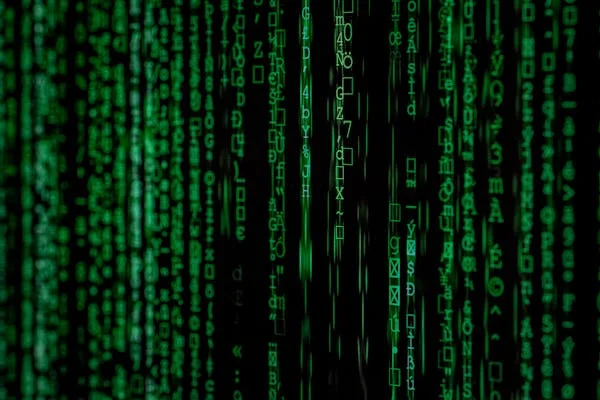Cyber threats are evolving fast. Businesses can’t afford to sit back and hope their security measures are strong enough. Waiting for an attack to happen before taking action is no longer an option.
Hackers are getting smarter. They’re using automation, AI, and advanced attack techniques to break into networks, steal sensitive data, and disrupt operations. Meanwhile, many organizations still rely on outdated security models that only react once an attack is already underway.
That approach doesn’t work anymore. A proactive defense strategy is now important. Companies need to anticipate threats, act before damage occurs, and stay ahead of attackers. That’s the only way to reduce risks, protect data, and maintain business continuity.
This article explores why reactive security fails, the importance of threat intelligence and automation, and how businesses can build a cybersecurity strategy that stops threats before they cause harm.
1. Cyber Threats Are Changing—So Should Your Defense
Cyberattacks aren’t just increasing in frequency—they’re becoming more sophisticated. Traditional defenses like firewalls and antivirus software aren’t enough to stop modern threats.
Today’s most dangerous attacks include:
- Ransomware: Hackers encrypt files and demand a ransom for decryption. Attacks are now automated and can spread across networks in minutes.
- AI-powered phishing: Cybercriminals use AI to craft highly convincing fake emails that trick employees into revealing sensitive information.
- Supply chain attacks: Instead of attacking businesses directly, hackers compromise third-party vendors to gain access.
- Zero-day exploits: Hackers target unknown software vulnerabilities before developers can fix them.
Security teams can’t manually track and defend against all these threats. They need real-time intelligence and automated responses to stay ahead of attackers.
That’s where AI-driven threat intelligence comes in. Platforms like Cyware’s threat intelligence solution allow businesses to:
- Automatically ingest threat data from multiple sources.
- Analyze risks in real-time and prioritize the most serious threats.
- Take action immediately—before an attack spreads.
By automating threat detection and response, businesses reduce risks, minimize damage, and free up security teams to focus on high-level strategy.
2. Why a Reactive Security Approach Fails
Many businesses still operate reactively—meaning they only act after an attack has already occurred. The problem? By the time a breach is detected, the damage is already done.
Here’s why reactive security doesn’t work anymore:
- Hackers move faster than ever: A ransomware attack can encrypt entire networks in minutes. A delayed response can mean huge financial and operational losses.
- Downtime is expensive: When an attack disrupts operations, businesses lose money every second they’re offline. The average cost of a data breach in 2024 was $9.36 million.
- Reputation damage is permanent: Customers lose trust after a cyberattack. Many companies never fully recover from the loss of credibility.
Cybercriminals don’t wait for organizations to respond—they strike fast. Businesses need to predict threats and neutralize them before they escalate. That’s why proactive cybersecurity is no longer optional.
3. The Key Pillars of Proactive Cybersecurity
Proactive defense means stopping cyber threats before they can cause harm. To achieve this, organizations need a multi-layered approach that combines threat intelligence, automation, and real-time response.
a) Continuous Threat Intelligence Monitoring
Cyber threats are constantly changing. Organizations need real-time monitoring to keep up.
A strong threat intelligence program helps security teams:
- Track emerging threats before they reach the network.
- Prioritize risks based on real-world intelligence.
- Respond faster to critical threats instead of wasting time on false alarms.
Advanced platforms automate this process by collecting, analyzing, and enriching threat data from multiple sources. This allows security teams to focus on prevention, rather than chasing after attacks that have already happened.
b) Real-Time Threat Intelligence Sharing
Cybercriminals share attack methods and vulnerabilities on dark web forums. If businesses don’t share threat intelligence, they’re always a step behind.
Collaboration is key. Companies must work together to stay ahead of attackers. This is where bi-directional threat intelligence sharing comes in.
By participating in threat intelligence networks (like ISACs and ISAOs), businesses can:
- Receive real-time alerts about threats affecting their industry.
- Share intelligence with trusted partners to strengthen defense efforts.
- Prevent attacks before they happen by learning from others’ experiences.
Without intelligence sharing, every company is fighting cybercrime alone. By working together, everyone benefits.
c) Security Orchestration and Automation (SOAR)
Most security teams don’t have enough time or manpower to manually respond to every alert. Automation is the answer.
Security Orchestration, Automation, and Response (SOAR) solutions:
- Integrate with multiple security tools to provide a unified defense system.
- Automate routine tasks, reducing manual workload for analysts.
- Accelerate incident response, reducing attack impact.
Automation isn’t about replacing security teams—it’s about helping them work smarter.
4. How Organizations Can Implement a Proactive Cybersecurity Strategy
A strong security strategy doesn’t happen overnight. Businesses need a step-by-step approach to shift from reactive to proactive cybersecurity.
Here’s how to start:
- Perform a Risk Assessment
- Identify weaknesses in current security policies.
- Evaluate potential attack surfaces (cloud, third-party vendors, remote work setups).
- Invest in Threat Intelligence and Automation
- Use AI-powered threat intelligence to predict and prevent cyber threats.
- Implement automated security tools like SOAR to speed up response times.
- Foster a Culture of Cybersecurity Awareness
- Conduct regular employee training on phishing and social engineering.
- Establish clear cybersecurity policies for remote work and BYOD (Bring Your Own Device).
- Enable Cross-Team Collaboration
- Security teams should work closely with IT, legal, and executive leadership.
- Encourage threat intelligence sharing across departments and external partners.
- Test and Improve Continuously
- Run regular security audits and incident response drills.
- Update security protocols based on real-world threat data.
Proactive cybersecurity isn’t a one-time project—it’s an ongoing process. The sooner businesses implement these steps, the safer they’ll be.
Cybersecurity has changed. Reactive defenses are no longer enough. Organizations that wait for an attack to respond are putting themselves at serious risk. A proactive approach—powered by real-time threat intelligence, automation, and collaboration—is the best way to stay ahead of cybercriminals.
Businesses must invest in AI-driven security solutions, embrace automation, and foster a culture of cybersecurity awareness. The organizations that do this will be the ones best prepared for the future of cyber threats.
The question isn’t if an attack will happen—it’s when. The time to act is now.





